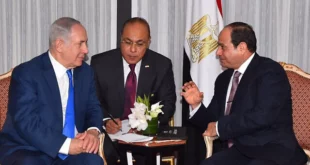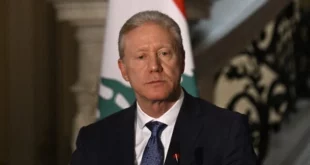As Russia continues to press forward with its doomed war in Ukraine and China watches its economic miracle erode, the leaders of both countries are in desperate need of allies. This is what made the BRICS summit, a meeting of the off-and-on alliance between Brazil, Russia, India, China, and South Africa, an appealing venue for the increasingly isolated regimes to exert influence and find friends on the global stage.
At the 15th BRICS Summit in Johannesburg last week, the BRICS countries announced the addition of six countries that will join the bloc in January: Argentina, Egypt, Ethopia, Iran, the U.A.E, and Saudi Arabia. Dozens of other countries have also expressed interest in joining BRICS, additions that may occur in the future. All of this might appear good news for Moscow and Beijing. However, any path forward will unlikely boost these former and potential superpowers. (READ MORE: We Should Stop Exploiting Africa — And Start Caring)
BRICS has seen renewed interest since President Luiz Inacio Lula da Silva’s election in Brazil last year. At times, BRICS has appeared to be little more than a symbolic alliance — its only substantial achievement since its official founding in 2001 has been the creation of the New Development Bank, now headed by the impeached former Brazilian President Dilma Rousseff and reportedly struggling to raise capital and make disbursements.
A Challenge to the West?
But renewed conversations between BRICS members have led some experts to worry about the possibility of a new economic bloc across the Global South that is strong enough to challenge America and the European Union. Member states, notably Brazil, China, and Russia, are also pushing for an alternative currency to the U.S. dollar in the hopes of skirting U.S. sanctions and blunting America’s power in the global economy. If a BRICS currency were viable, it could constrain America’s capacity to engage in economic statecraft, which depends upon target regimes relying upon the U.S. dollar for trade and reserves.
There are serious questions about whether the current membership is economically aligned and whether they could resolve their differences enough to unify against the West. New members, such as Iran and Saudi Arabia, are only likely to complicate those dynamics.
When the first BRICS summit took place in 2009, the founding countries had far more in common. Since then, the political and economic landscape has changed dramatically.
India and China are increasingly at economic and political odds, with India seeking to supplant China as leading manufacturer to the world and repeated clashes on their shared border ramping up tensions between the two countries. On top of that, China is domestically unpopular in other BRICS countries, with 62 percent of Brazilians, 56 percent of Indians, and 40 percent of South Africans maintaining unfavorable perceptions of China. (READ MORE: India’s China Problem: A View From New Delhi)
Russia, meanwhile, has transformed from a major power into a pariah state following the invasion of Ukraine. In Brazil and South Africa, a majority of the populations believe that the world will be a more dangerous place if Russia achieves victory in Ukraine. South Africa, for its part, is struggling with its own economic and political headwinds after the corruption scandals under former President Jacob Zuma. And finally, Brazil has seen wild political swings from far left to far right and back again and massive corruption scandals, has been struggling to find its geopolitical footing for the past decade.
It is vital for the U.S. to build more productive and mutually beneficial bilateral relationships with India, Brazil, and countries throughout the Global South. Adding Iran to this combustible mix will only further contribute to disunity. While Iran is a reliable anti-western ally to Russia and sits on enormous oil and gas reserves, it shares little in common with China other than an antipathy towards Washington. As for India, Brazil, and South Africa, who’s interest straddle the China-U.S. divide, Iran’s inclusion only makes it far more unlikely that BRICS will gain mainstream support.
While Saudi Arabia and Iran appear to be moving toward rapprochement, their long history of animosity will be hard to overcome. If they do manage to work together, it will only cement Saudi Arabia’s current rift with the U.S. — its largest miliary supplier — a position that is likely to harm the Saudi’s long term interests. Ethiopia and Egypt, too, have serious conflicts to resolve.
Finally, Argentina’s inclusion is decidedly peculiar, as the country is facing elections this fall, which may well see the country turn sharply toward America and away from other BRICS countries. Indeed, the leading candidate in the initial round of primary voting is a conservative economist who has pledged to dollarize the economy — not exactly a BRICS-compatible position. Since the election will occur before the January date for new BRICS members to become official, this addition needs to be flagged with a major asterisk.
Potential Partners?
In addition to Iran, Saudi Arabia, and the others, numerous authoritarian governments and ostracized regimes are also lining up to join BRICS — hoping to give voice to an anti-Western bloc with little else in common. By recent count, twenty-two countries have formally applied for BRICS membership, with another twenty purportedly expressing interest.
Whether more expansion is on the horizon, the time is ripe to consider what the future holds for BRICS.
To date, BRICS has been little more than a symbolic union. It is unclear how that is likely to change in the near term. Beijing and Moscow are, every day, veering further away from the West, drawing closer to dictatorships like Iran, while Brazil, India, and South Africa have little incentive to do anything other than to continue to maintain their nonaligned strategy. Internally divided over the alliance’s identity (anti-West/U.S. or just pro-multipolarity), BRICS is almost certain to remain an organization without a mission. (RELATED: There Is Still Good in the World)
Of course, BRICS could embrace all countries that have expressed an interest in membership, massively increasing its size and scope, providing a venue for those countries in the Global South who resent Western and American hegemony. But a full expansion, including many countries plagued with weak economies and disorderly governance, could prove internally disruptive and unworkable in practice. The list of potential members contains too many lingering feuds, such as the ongoing conflicts between Pakistan and India. Other nations, like Syria, Burundi, Nicaragua, Afghanistan, Venezuela, Cuba, Sudan, and Kazakhstan are tied with human rights violations, corruption scandals, authoritarian regimes, and regional conflict. It is hard to envision how the inclusion of any of these countries economically benefits Brazil and India.
With the BRICS Summit coming to a close, it is unclear what has been accomplished. Indeed, the new additions are far more likely to undermine than bolster the group’s clout. Since its inception, BRICS has been hamstrung by its members’ diverse interests, and the odds are that it will remain in this stalemate for the foreseeable future. But that doesn’t mean Western countries should be complacent. While the U.S. shouldn’t take immediate action that further meddles with the complicated relationship it holds with the BRICS alliance, it is vital for the U.S. to build more productive and mutually beneficial bilateral relationships with India, Brazil, and countries throughout the Global South.
 Eurasia Press & News
Eurasia Press & News



